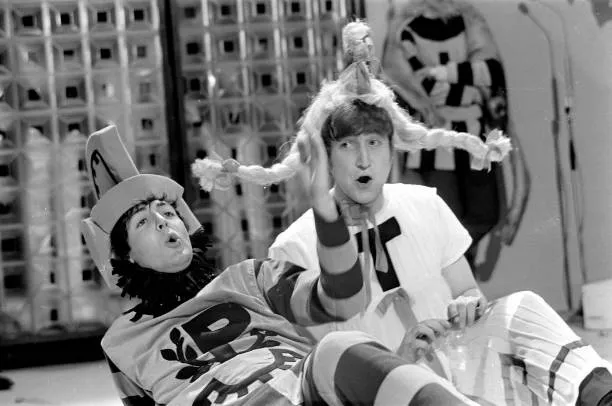In the realm of art and music, few figures are as iconic and influential as John Lennon. Best known as one of the founding members of The Beatles, Lennon's creative genius extended far beyond the realm of music, encompassing painting, drawing, and writing. The John Lennon Sketchbook offers a rare and intimate glimpse into the mind of the legendary artist, showcasing his talent, imagination, and boundless creativity.
(Watch the video below)

The John Lennon Sketchbook originated during a period of transition and self-discovery for the artist. In the late 1960s, as The Beatles were at the height of their fame, Lennon began to explore new avenues of expression outside of music. Drawing inspiration from his travels, experiences, and innermost thoughts, he embarked on a journey of artistic exploration that would ultimately give rise to the sketchbook.

Filled with sketches, doodles, and handwritten notes, the sketchbook serves as a visual diary of Lennon's creative process. From whimsical cartoons and caricatures to poignant reflections and abstract compositions, each page offers a window into Lennon's imagination and artistic sensibility. It's a testament to his willingness to push boundaries, take risks, and embrace the unknown in pursuit of artistic expression.

Throughout The John Lennon Sketchbook, certain themes and motifs emerge, reflecting Lennon's personal interests, experiences, and worldview. Nature, peace, love, and spirituality are recurring themes, echoing the artist's commitment to social and political activism. Sketches of flowers, birds, and landscapes coexist alongside images of peace signs, hearts, and symbols of unity, creating a rich tapestry of imagery that speaks to Lennon's ideals and aspirations.

The sketchbook also offers insight into Lennon's fascination with the human form and the complexities of the human experience. Portraits, self-portraits, and figures in various states of emotion populate its pages, capturing the nuances of human expression and the depth of human relationships. From tender moments of intimacy to expressions of anguish and despair, Lennon's sketches reveal a profound empathy and understanding of the human condition.
As one flips through the pages of The John Lennon Sketchbook, it becomes evident that Lennon's artistic style was constantly evolving. From the early days of simple line drawings and rough sketches to the later period of more intricate compositions and experimental techniques, the sketchbook chronicles Lennon's artistic growth and experimentation over time.

One can trace the influence of various artistic movements and styles throughout the sketchbook, from surrealism and expressionism to pop art and abstraction. Lennon's willingness to challenge conventions, break free from traditional norms, and embrace spontaneity and improvisation is evident in the diversity of his artistic output. Each sketch is a testament to his restless spirit, insatiable curiosity, and relentless pursuit of creative expression.

The John Lennon Sketchbook stands as a testament to the enduring legacy of one of the 20th century's most beloved artists. Beyond its aesthetic value, the sketchbook serves as a source of inspiration and encouragement for aspiring artists and fans alike. It's a reminder that creativity knows no bounds and that artistic expression can serve as a powerful force for change and transformation in the world.

In the decades since its creation, The John Lennon Sketchbook has captivated audiences around the world, inspiring countless exhibitions, publications, and tributes. Its influence extends far beyond the realm of art, permeating popular culture and shaping the collective imagination. As we continue to explore Lennon's life, work, and legacy, The John Lennon Sketchbook remains a timeless testament to the power of creativity, imagination, and self-expression.



